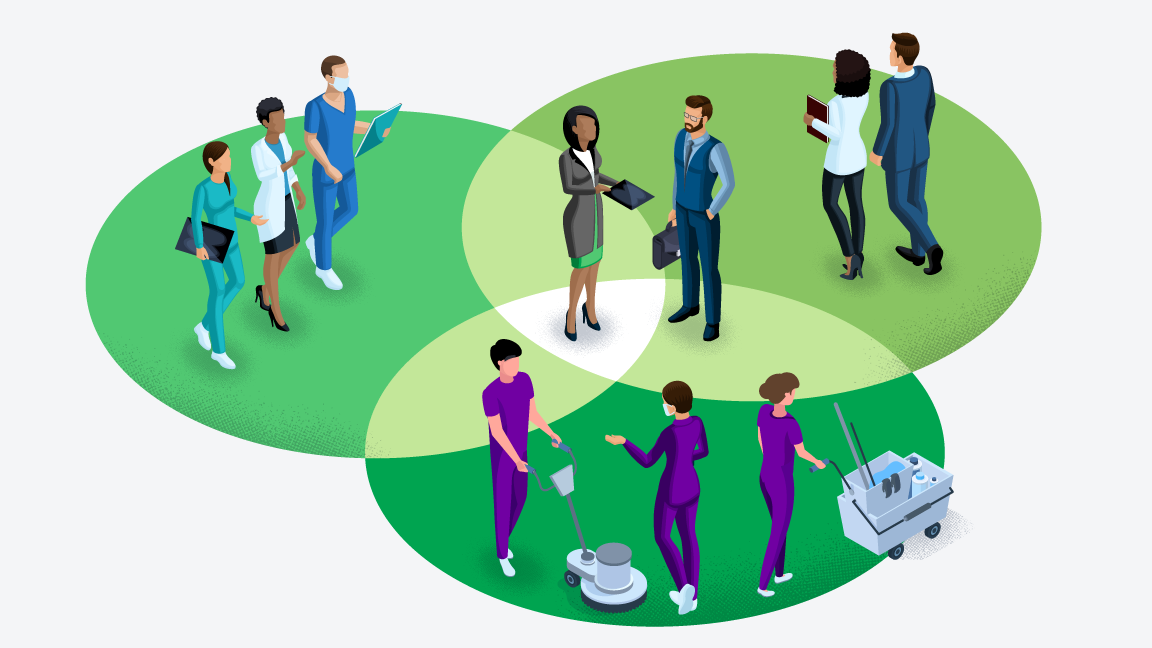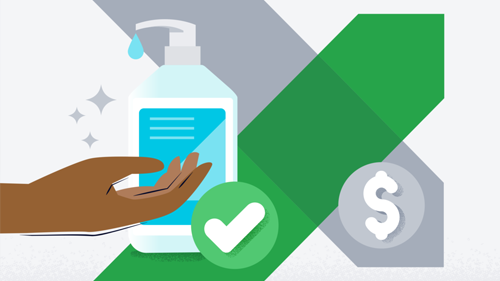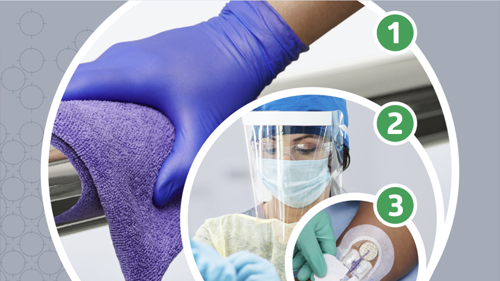The infection preventionist evolution: 10 ways to lead the way
Learn how to take a culture of safety in healthcare to the next level.

In the early 1960s, infection control nursing became a specialty in the U.S. These infection control nurses or infection control practitioners began surveillance measures to identify healthcare-associated infections (HAIs).1 With the adoption of pay-for-performance standards and financial implications for HAIs in the 2000s, surveillance and ultimately the goal of preventing these “never events” elevated the role of the IP in acute care.2
In fact, the Association for Professionals in Infection Control and Epidemiology (APIC) coined the term “infection preventionist” in 2008 to better express the expanding role.1
So how do you make sure everyone in your facility—from administration to EVS—knows what you do and what you bring to the table?
Here are 10 actions you can take to help get the word out:
1
Get out of your office more.
“You escalate your value within a hospital system when you’re out of your office and not looking at the spreadsheet,” says Donna Matocha, DNP, MSN, VA-BC, Medline Manager of Clinical Resources—Acute Care. For example, there are nursing leadership shared governance meetings that bedside nurses attend. Participating, listening to what’s going on at the bedside and providing education will help you enhance the practice.
Having more interactions outside your office provides an opportunity for teaming up with clinical and non-clinical leaders across the organization, for example, administration, supply chain and materials management—people whose support you need when decisions are being made about products.
“Products have implications that other people on the committee don’t have within their scope,” says Matocha. Adding your perspective to the conversation when looking through products will improve patient safety.
2
Add your expertise on committees.
Serving on committees is a good way to increase your visibility and get to know cross-departmental leaders. “Data really reveals what works and what doesn’t,” says Caryn Arnold, MBA, RN, BSN, Medline Medical Science Liaison. “This kind of expertise and analysis is how you can provide value and advocacy for patients and residents. How you present your information is critical to showing yourself as an infection prevention expert.”
3
Cultivate partnerships and get involved in initiatives.
The importance of nursing partnerships can’t be underestimated. Per Matocha, when you’re going to be brought onto a nursing committee such as CAUTI or CLABSI, the nurses think, “the IP is going to talk about washing our hands.” You’re viewed as the gatekeeper for certain things such as hand hygiene.
By getting more involved overall in initiatives—and explaining the why of hand hygiene and other practices—you’ll improve understanding and value for your role. Overall, you need to partner with colleagues in every area you touch, whether EVS, food service, volunteer coordination or laundry/linens.
You escalate your value within a hospital system when you’re out of your office and not looking at the spreadsheet.

Donna Matocha, DNP, MSN, VA-BC
Medline Manager of Clinical Resources—Acute Care
4
Go on rounds so patients and their families get to know you.
Interact with them. Say, “I’m from infection prevention. We’re doing line audits today. This is what we do to make things safer in the hospital.” Then the public understands that there’s a role in this hospital that is preventing infections. As a whole, in regard to patient satisfaction, they’ll feel like this is a safe place.
5
Be the expert colleagues want to approach.
It can be challenging, as Arnold points out. “IPs have said to me, ‘Everybody sees me as the person who goes around and tells them what they’re doing wrong.’ So you have to be careful how you present that information.” If you see someone who’s not doing appropriate hand hygiene, do you treat it as a punishment or a learning opportunity?
In addition, people wanting to approach you for insights will happen organically as the impact of your involvement on committees and teams starts to be seen and understood.
How you present your information is critical to showing yourself as an infection prevention expert.

Caryn Arnold, MBA, RN, BSN
Medline Medical Science Liaison
6
Continually learn and grow.
“Earn your certification, engage with your local chapters and seek out educational opportunities,” says Matocha. “It shows you’re striving for excellence in your specialty.”
In 2012, APIC developed the first model for IP competency, which included four domains. In 2019, due to an “increasingly complex landscape,” APIC increased the number of domains to six: Leadership, Professional Stewardship, Quality Improvement, Infection Prevention and Control Operations, Infection Prevention and Control Informatics, and Research.3
7
Gain an understanding of surveillance technologies.
It’s been estimated that 45% of your time is spent on surveillance activities. Automated surveillance software addresses a need for accuracy and time efficiency. Take the lead by having a robust knowledge of electronic solutions and integrate the right platform taking variables into consideration.4
8
Get creative to increase consistent hand hygiene.
Hand hygiene compliance remains challenging. Show the way forward by developing new approaches in training and education, investigating the most effective monitoring strategies and determining the best processes for enhancing communication of monitoring results.4
9
Keep up with how to address multidrug-resistant organisms (MDROs).
Partner with key healthcare personnel to review core information regarding MDROs and determine facility policy on such issues as isolation, appropriate therapy and antibiotic stewardship.4
10
Improve device-associated bloodstream infection surveillance and intervention.
Identify provider knowledge gaps and ensure they receive education to support the introduction of an enhanced central line maintenance bundle. In addition, use this education to evaluate novel technologies including advanced antimicrobial IV dressings.4
Key takeaway
Your role continues to evolve, requiring expanded competencies and cross-organizational collaboration. By getting out of your office, being involved in committees and initiatives, going on rounds and continually learning and growing, you’ll be well positioned to be seen as the change leader you are.
References:
- Dixon, R. (2011, October 7). Control of Healthcare-Associated Infections, 1961-2011. CDC Morbidity & Mortality Weekly Report, 60(04), 58-63. Control of Health-Care–Associated Infections, 1961–2011 (cdc.gov)
- 2. Wright, M. (2022, January 31). Transformative Role of the Infection Preventionist. Healthcare Business Today. Transformative Role of the Infection Preventionist – Healthcare Business Today
- Billings, C., et al. (2019, June). Advancing the profession: An updated future-oriented competency model for professional development in infection prevention and control. American Journal of Infection Control, 47(6), 602-614. https://apic.org/wp-content/uploads/2019/05/June-2019-AJIC-Article-APIC-Competency-Model.pdf
- Garcia, R., et al. (2022, December). Recommendations for change in infection prevention programs and practice. American Journal of Infection Control, 50(12), 1281-1295. https://www.ajicjournal.org/article/S0196-6553(22)00357-1/fulltext





